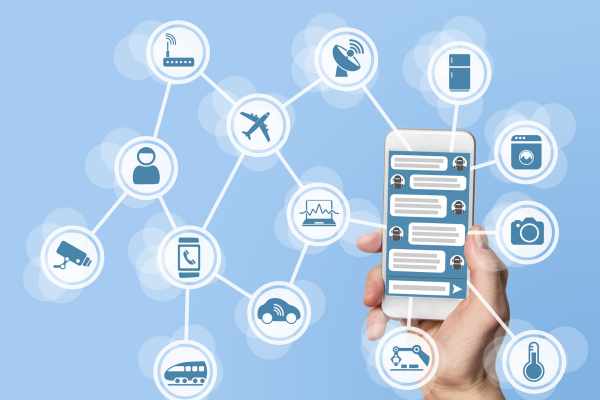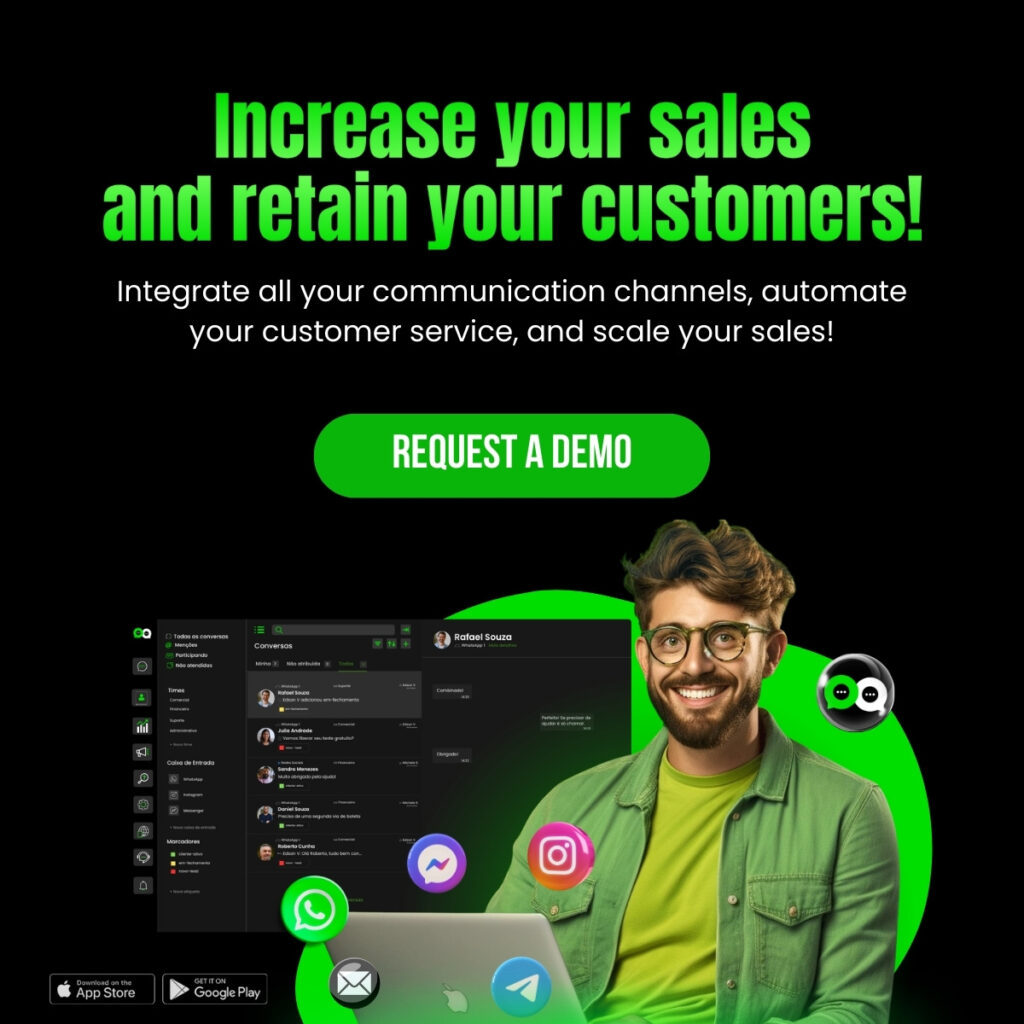Chatbots: Revolutionizing Customer Interaction
Chatbots are revolutionizing how companies interact with their customers by offering 24/7 support, automating repetitive tasks, and enhancing operational efficiency.
This step-by-step guide will explain how to create a chatbot for your company, from defining objectives to continuous implementation and optimization.
Additionally, we present a list of the 10 best chatbot tools available in the market.
What is a Chatbot for Businesses?
A business chatbot is a virtual assistant that uses artificial intelligence (AI) to interact with customers and users in real-time.
It can be implemented on various platforms such as websites, messaging apps, and social networks to provide support, answer frequently asked questions, assist in purchase processes, and much more.
Benefits of Chatbots for Businesses
– 24/7 Support: Available to answer customer questions any time of the day or night.
– Task Automation: Automates repetitive tasks such as answering frequently asked questions and processing common requests.
– Improved Customer Experience: Provides quick and accurate responses, enhancing customer satisfaction.
– Increased Sales: Facilitates the purchasing process, recommends products, and offers personalized promotions.
How to Create a Chatbot for Businesses: Step by Step
Step 1: Define Objectives and Functionalities
Before developing your chatbot, it is crucial to clearly define the objectives and desired functionalities. Ask yourself:
– What problems do you want to solve?
– What tasks do you want to automate?
– What will be the chatbot’s role in customer service and the sales process?
Step 2: Choose the Development Platform
Choosing the right platform to develop your chatbot is fundamental. Here are some of the main chatbot platforms available:
– Dialogflow (Google): Uses NLP to create intelligent and interactive chatbots.
– Microsoft Bot Framework: Offers advanced development tools and integration with various platforms.
– IBM Watson Assistant: Provides advanced AI and NLP features to create powerful chatbots.
– Chatfuel: Ideal for creating Facebook Messenger chatbots without coding.
Step 3: Plan and Design the Conversation
Careful planning of the conversation is essential to create an effective chatbot. Follow these steps:
– Map the Conversation Flows: Draw a map of possible conversation flows, including greetings, frequently asked questions, responses, and conclusions.
– Create Conversation Scripts: Develop detailed scripts for each interaction, ensuring that the chatbot can respond clearly and coherently.
– Define Personality and Tone: Decide the chatbot’s personality and tone to reflect your brand’s identity.
Step 4: Develop the Chatbot
With a clear plan, it’s time to develop the chatbot. Follow these steps:
– Set Up the Platform: Follow the chosen platform’s instructions to set up your development environment.
– Program the Conversation Flows: Use the platform’s interface to program the developed conversation flows and scripts.
– Integrate AI and NLP: Configure AI and NLP capabilities so the chatbot can understand and respond to various questions and commands.
Step 5: Test and Refine
Testing the chatbot is a crucial part of the development process. Follow these steps to ensure it works correctly:
– Conduct Internal Tests: Run internal tests with your team to identify problems and areas for improvement.
– Collect User Feedback: Launch a beta version of the chatbot to a select group of users and gather feedback.
– Refine Conversation Flows: Adjust conversation flows and scripts based on the received feedback.
Step 6: Implement and Monitor
After testing and refining your chatbot, it’s time to launch it to the public. Follow these steps:
– Implement the Chatbot: Integrate the chatbot into your website, app, or messaging platform.
– Monitor Performance: Use analytics tools to monitor the chatbot’s performance and identify areas for improvement.
– Continuously Adjust and Optimize: Make continuous adjustments to conversation flows and functionalities based on user feedback and performance metrics.
10 Chatbot Tools for Businesses
To help you choose the best chatbot tool for your business, here is a list of the top 10 options available in the market, with their features and advantages.
1. Nexloo
– Seamless Integration: Easily integrates with e-commerce platforms and CRM, offering a complete chatbot solution for businesses.
– Advanced Automation: Features advanced AI and automation to personalize customer interactions.
– Reports and Analytics: Robust analysis tools to monitor chatbot performance and identify areas for improvement.
2. ManyChat
– User-Friendly: Intuitive and easy to configure interface.
– Multichannel Support: Integration with Facebook Messenger, Instagram, WhatsApp, and other platforms.
– Marketing Automation: Tools to create automated marketing campaigns.
3. Tidio
– E-commerce Integration: Integrates with Shopify, WooCommerce, and other platforms.
– Live Chat: Combines chatbots with live chat for more comprehensive support.
– Response Automation: Automates responses to frequently asked questions and common interactions.
4. Chatfuel
– Easy Setup: Quick setup with no coding required.
– Customization: Advanced customization tools to create conversation flows.
– Detailed Analytics: Detailed reports to monitor chatbot performance.
5. Drift
– Marketing and Sales: Focused on increasing conversions and generating leads.
– CRM Integration: Integrates with Salesforce, HubSpot, and other CRM tools.
– Automated Responses: Automates common interactions and captures customer information.
6. Zendesk Chat
– Zendesk Integration: Works seamlessly with the Zendesk customer support platform.
– Live Chat and Bot: Combines live chat with chatbot functionalities.
– Reports and Analytics: Robust tools to monitor and analyze interactions.
7. Intercom
– Complete Platform: Combines chatbot, live chat, and marketing tools.
– Task Automation: Automates repetitive and low-value tasks.
– Personalization: Advanced features to personalize interactions based on user behavior.
8. MobileMonkey
– Multichannel Marketing: Supports Facebook Messenger, Instagram, and SMS.
– Growth Tools: Features to capture leads and increase engagement.
– Intuitive Interface: Easy to set up and use.
9. Freshchat
– Messaging Platform: Combines live chat, chatbot, and messaging in one platform.
– E-commerce Integration: Integrates with Shopify, WooCommerce, and other platforms.
– Response Automation: Automates responses to frequently asked questions and common interactions.
10. LivePerson
– Artificial Intelligence: Uses AI to offer more natural and personalized interactions.
– Sales Automation: Tools to automate the sales process and increase conversions.
– CRM Integration: Integrates with Salesforce, HubSpot, and other CRM tools.
Conclusion
Chatbots are a powerful tool for improving efficiency and customer experience in businesses.
By following this step-by-step guide, you can develop and implement an effective chatbot that meets your business’s specific needs.
With the help of the listed tools, including Nexloo, you can further maximize your chatbot’s potential, providing exceptional service to your customers.




